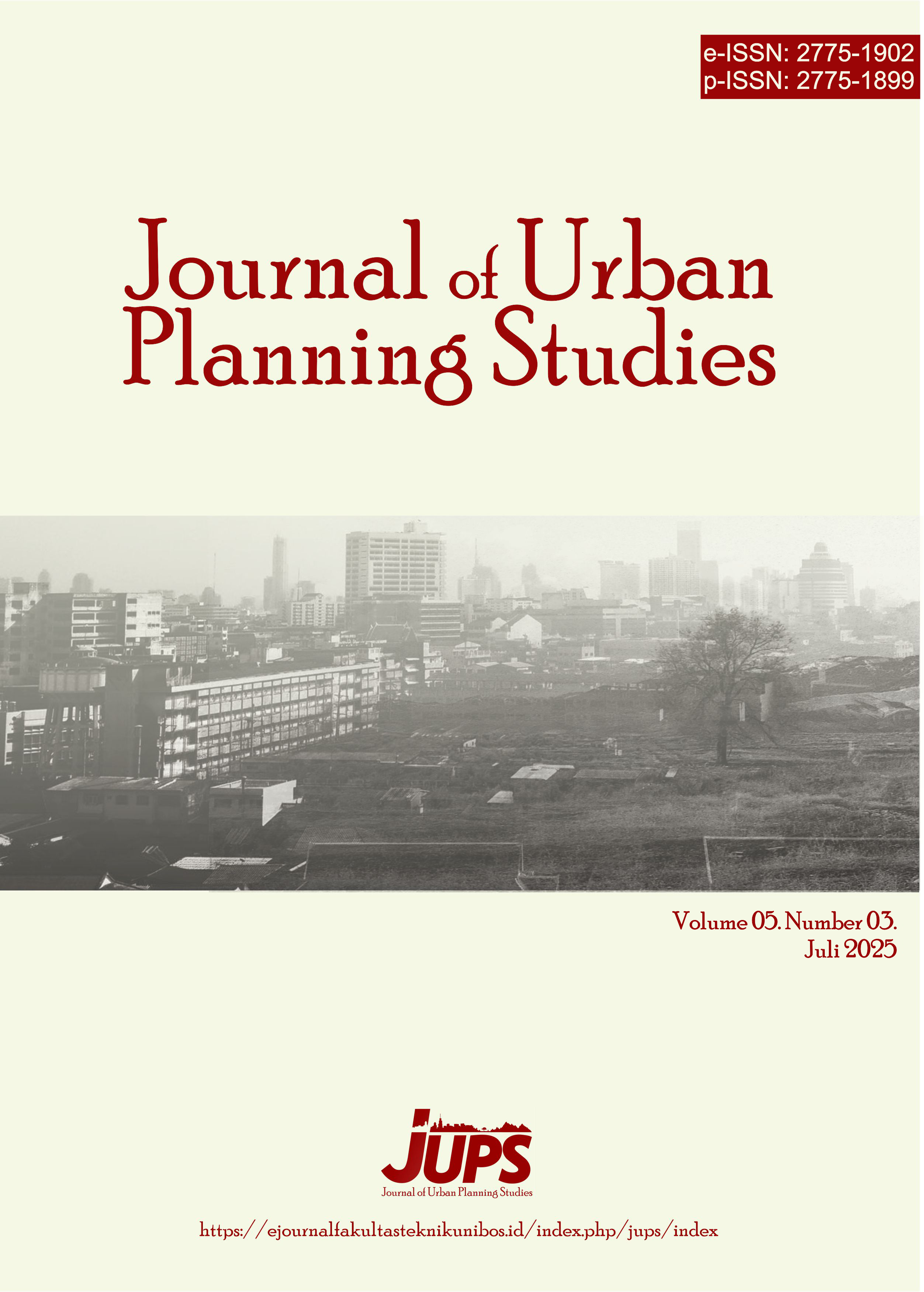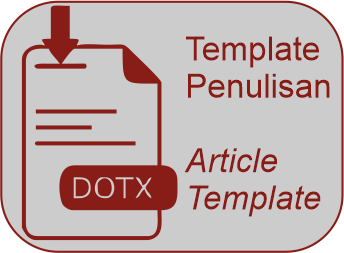Strategi Peningkatan Partisipasi Masyarakat Terhadap Pengembangan Pariwisata Berkelanjutan Di Destinasi Wisata Ke’te’ Kesu’ Kabupaten Toraja Utara
Keywords:
Strategy Sustainable DevelopmentAbstract
Ela Tabbo. "Strategy for Increasing Community Participation in Sustainable Tourism Development at the Ke'te Kesu' Tourism Destination, North Toraja Regency." Rudi Latief and Rusneni
This research aims to identify the factors that cause low community participation in the development of sustainable tourism in the Ke'te Kesu' tourist destination and determine strategies that can be used to increase community participation in the development of sustainable tourism in theKe'te Kesu' tourist destination, North Toraja Regency. .
Data collection methods use field survey methods and documentation using questionnaires. Then processed using multiple linear regression analysis and AHP analysis. From the results of the multiple linear regression analysis test that have been carried out,it can be concluded that the dominant factors influencing low community participation are a sense of security, facilities, knowledge, leadership. Then, from the results of the hierarchyprocess (AHP) analysis, the results showed that overall increasing accessibilitywas the most important priority value. The second priority was increasing attaractiveness, while the thrid priority was increasing tourism promotion. Andthe final priority is increasing human resources in accordance with nedss.
References
Arıca, R., Kodas, B., Cobanoglu, C., Parvez, M. O., Ongsakul, V., & Della Corte, V. (2023). The role of trust in tourists’ motivation to participate in co-creation.Tourism Review. https://doi.org/10.1108/TR-08-2021-0399
Basile, G., Tani, M., Sciarelli, M., & Ferri, M. A. (2021). Community participation as a driver of sustainable tourism. The case of an Italian village: Marettimo Island.Sinergie Italian Journal of Management. https://doi.org/10.7433/S114.2021.06
Canaan, R. P. (2020). Creative Economy and Cultural Heritage: A Proposal to Tourism Development and Appreciation of Local Identity.Strategic Design Research Journal. https://doi.org/10.4013/SDRJ.2019.122.12
Cheung, M. L., Ting, H., Cheah, J.-H., & Sharipudin, M.-N. S. (2021). Examining the role of social media-based destination brand community in evoking tourists’ emotions and intention to co-create and visit.Journal of Product & Brand Management. https://doi.org/10.1108/JPBM-09-2019-2554
Ciasullo, M. V., Montera, R., & Palumbo, R. (2024). Online content responsiveness strategies in the hospitality context: exploratory insights and a research agenda.The TQM Journal. https://doi.org/10.1108/TQM-12-2019-0299
Erragcha, N., & Babay, H. (2022). Effects of Media Coverage and Perceived Risk during COVID-19: Moderated Mediation Model.African Journal of Hospitality, Tourism and Leisure. https://doi.org/10.46222/ajhtl.19770720.327
Fang, X., & Xiang, K. (2023). Tourism visual deception in “check-in tourism”: Value co-creation and co-destruction perspectives.Journal of Hospitality and Tourism Management. https://doi.org/10.1016/j.jhtm.2023.10.009
Giannopoulos, A., Livas, C., Simeli, I., & Achlada, C. (2022). Is destination image instagrammable? Visit intentions and value co-creation through social media content.Int. J. Technology Marketing.
Gray, B. (2022). Capacity and decision making.Journal of Medical Ethics. https://doi.org/10.1136/medethics-2022-108287
Heljakka, K., & Räikkönen, J. (2023). #Instadolls on staycation – doll dramas narrating popular culture tourism and regional development.Scandinavian Journal of Hospitality and Tourism. https://doi.org/10.1080/15022250.2023.2199699
Hrafska, O., Holovchuk, Y., & Chetyrbuk, O. (2022). Theoretical fundamentals of research in tourism infrastructure as an innovative basis of regional tourism development.Ìnfrastruktura Rinku. https://doi.org/10.32843/infrastruct66-26
Iqbal, A., Ramachandran, S., Ling, S. M., Subramaniam, T., & Latiff, K. B. (2023). Insights into the Role of Community Participation as a Tool for Local Support: A Normative Model for Competitive and Sustainable Destination Development.International Journal of Academic Research in Business & Social Sciences. https://doi.org/10.6007/ijarbss/v13-i1/15600
Jiang, H., Meng, F., & Liu, B. (2025). Unlocking Nontransactional Value Co-creation: Insights From Online Travel Communities.Journal of Travel Research. https://doi.org/10.1177/00472875241237256
Kajtazi, T. J., Jakupi, A., & Gjinolli, I. (2023). Community-based planning for drafting anurban regulatory plan.Pollack Periodica. https://doi.org/10.1556/606.2022.00734
Li, X. P., Abbas, J., Dongling, W., Baig, N.-A., & Zhang, R. (2022). From Cultural Tourism to Social Entrepreneurship: Role of Social Value Creation for Environmental Sustainability.Frontiers in Psychology. https://doi.org/10.3389/fpsyg.2022.925768
Lo Presti, L., & Maggiore, G. (2025). Travel bloggers and multi-actor engagement in social media platforms for collaborative network management: models of value co-creation.Current Issues in Tourism. https://doi.org/10.1080/13683500.2025.2500083
Mahawar, K., & Rattan, P. (2023). Dimensionality Reduction using Feature Selection Techniques on EDM for Student Academic Performance Prediction.International Journal on Recent and Innovation Trends in Computing and Communication. https://doi.org/10.17762/ijritcc.v11i10.8961
Mandagi, D. W., & Centeno, D. (2024). Destination brand gestalt: dimensionalizing co-created tourism destination branding.International Journal of Tourism Cities. https://doi.org/10.1108/IJTC-02-2024-0049
Nair, S. S., & Prem, S. S. (2020). A Framework for Mixed-method Research.Management Science. https://doi.org/10.34293/MANAGEMENT.V8I2.3220
Rachmawati, E., Hidayati, S., & Rahayuningsih, T. (2022). Community involvement and social empowerment in tourism development.Media Konservasi. https://doi.org/10.29244/medkon.26.3.193-201
Ramírez Zamora, C. (2023). The Importance of Preserving and Protecting Natural Resources for the Future of Tourist Destinations in Mexico.Journal of Management and Sustainability. https://doi.org/10.5539/jms.v13n2p39
Ramos, V., Ruiz-Pérez, M., & Alorda, B. (2021). A Proposal for Assessing Digital Economy Spatial Readiness at Tourism Destinations.Sustainability. https://doi.org/10.3390/SU131911002
Rasker, R. (2022).Mixed method designs. https://doi.org/10.4324/9781003109945-35
Setokoe, T. J., & Ramukumba, T. (2022). Ability to do for self. a rural community’s view of the importance of capacity building in sustainable tourism development.Geojournal of Tourism and Geosites. https://doi.org/10.30892/gtg.41232-866
Sulkaisi, N. (2020, March 10).Analysis of Service Quality on Tourist Satisfaction and Tourist Loyalty Study at Adityawarman Museum. https://doi.org/10.2991/AEBMR.K.200305.096
Triyono, B., Hardiyati, R., & Pradana, A. W. (2020).The Gap Between Program Planning and Implementation: The Case of R&D Program in Indonesian RPJMN. https://doi.org/10.14203/STIPM.2020.285
Tseng, M.-H., & Wu, H.-C. (2021). Integrating Socioeconomic Status and Spatial Factors to Improve the Accessibility of Community Care Resources Using Maximum-Equity Optimization of Supply Capacity Allocation.International Journal of Environmental Research and Public Health. https://doi.org/10.3390/IJERPH18105437
Wani, G. A. (2022). Appraisal of Theoretical Interlinkages between Infrastructure, Services and Sustainable Tourism.Asean Journal on Hospitality and Tourism. https://doi.org/10.5614/ajht.2022.20.2.09
Youn, H. M., Lee, D. W., & Park, E. C. (2020). Association between community outpatient clinic care accessibility and the uptake of diabetic retinopathy screening: A multi-level analysis.Primary Care Diabetes. https://doi.org/10.1016/J.PCD.2020.02.010
Zeineddine, H., Braendle, U., & Farah, A. (2020). Enhancing prediction of student success: Automated machine learning approach.Computers and Electrical Engineering. https://doi.org/10.1016/j.compeleceng.2020.106903
Downloads
Published
How to Cite
Issue
Section
License
Copyright (c) 2025 Ela Tabbo, Rudi Latief, Rusneni Ruslan

This work is licensed under a Creative Commons Attribution 4.0 International License.













